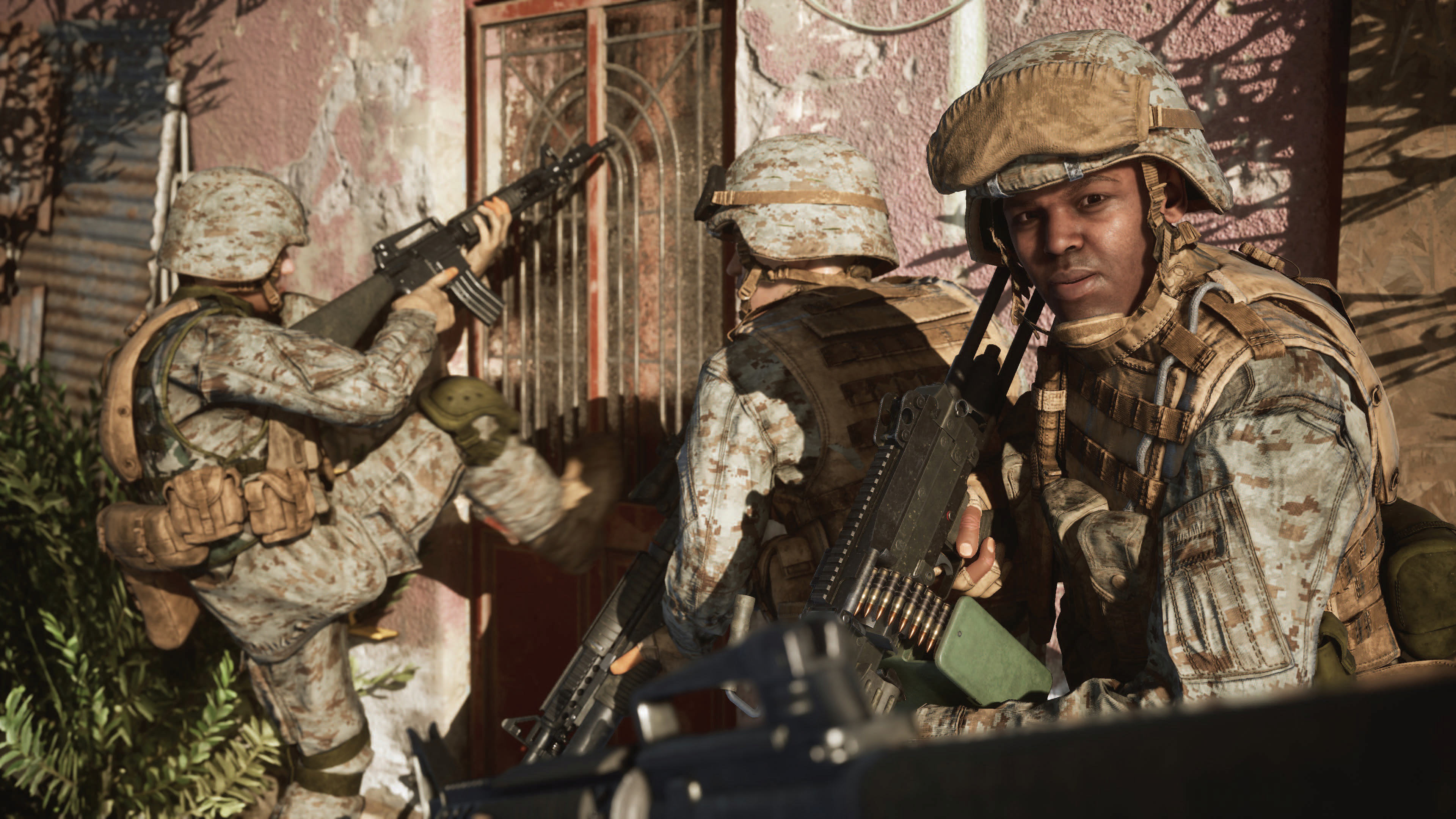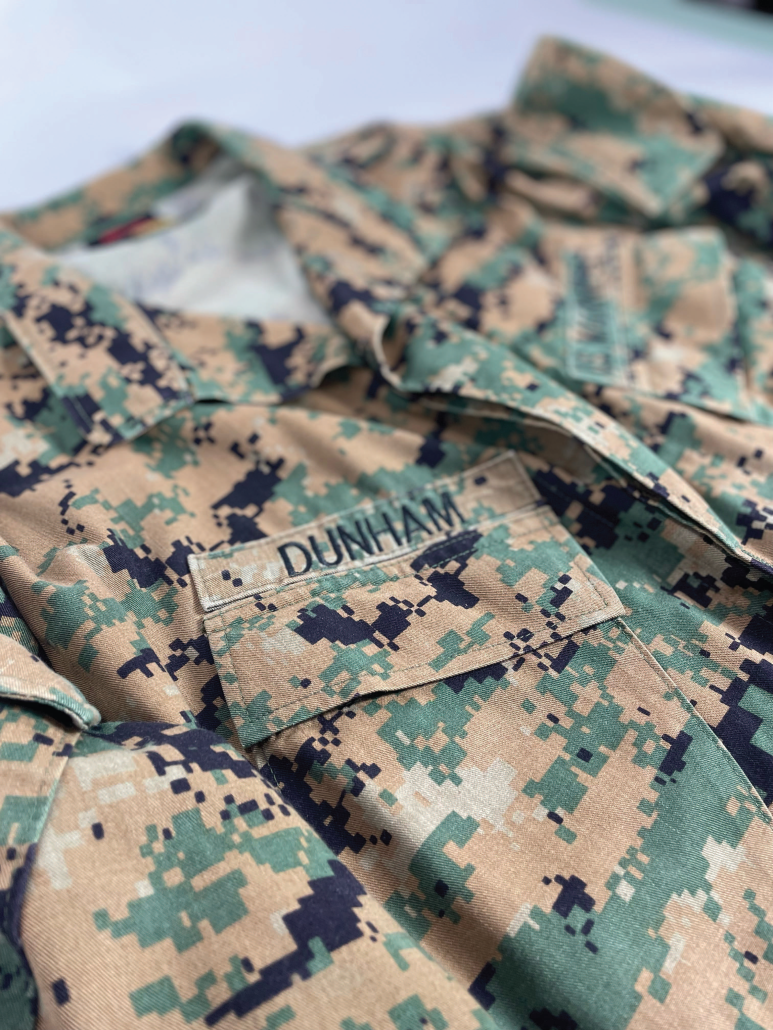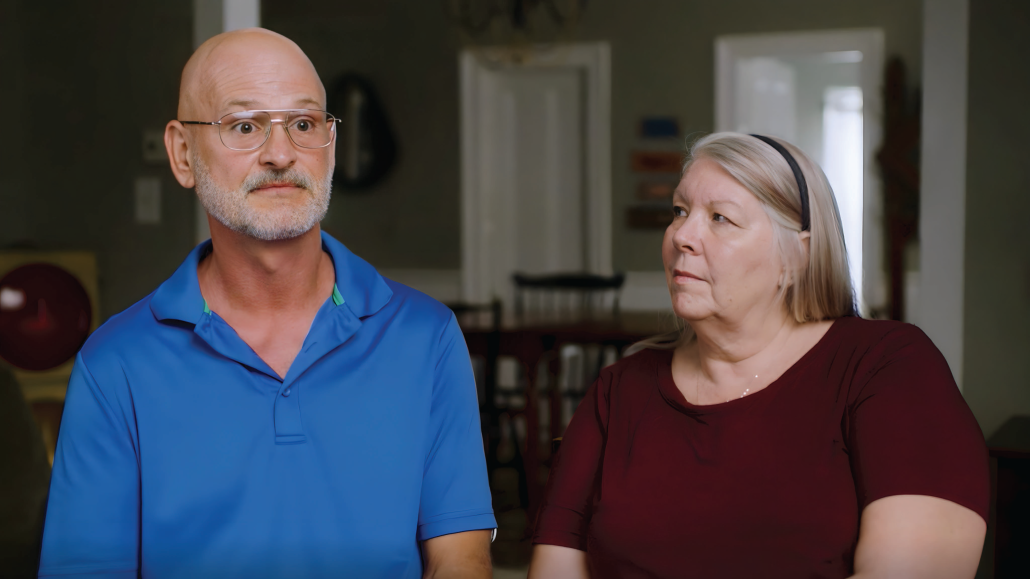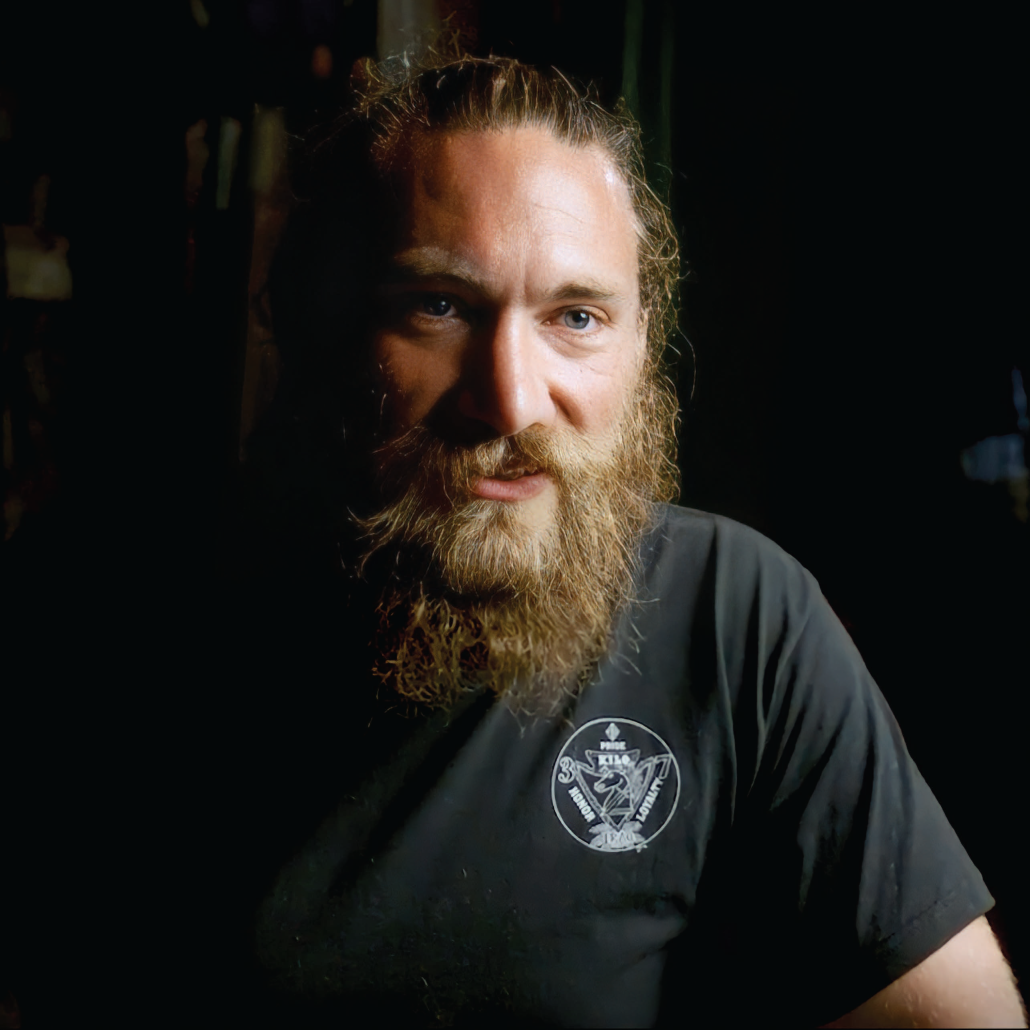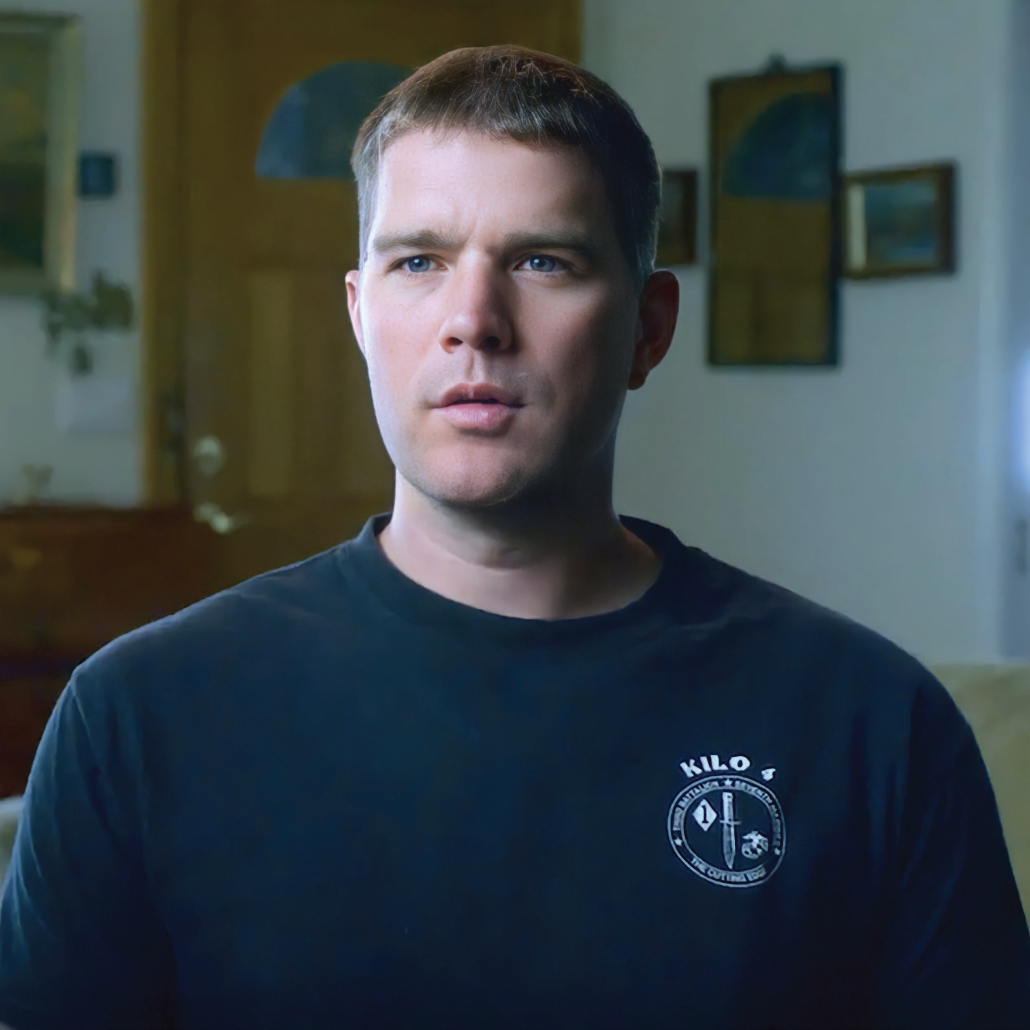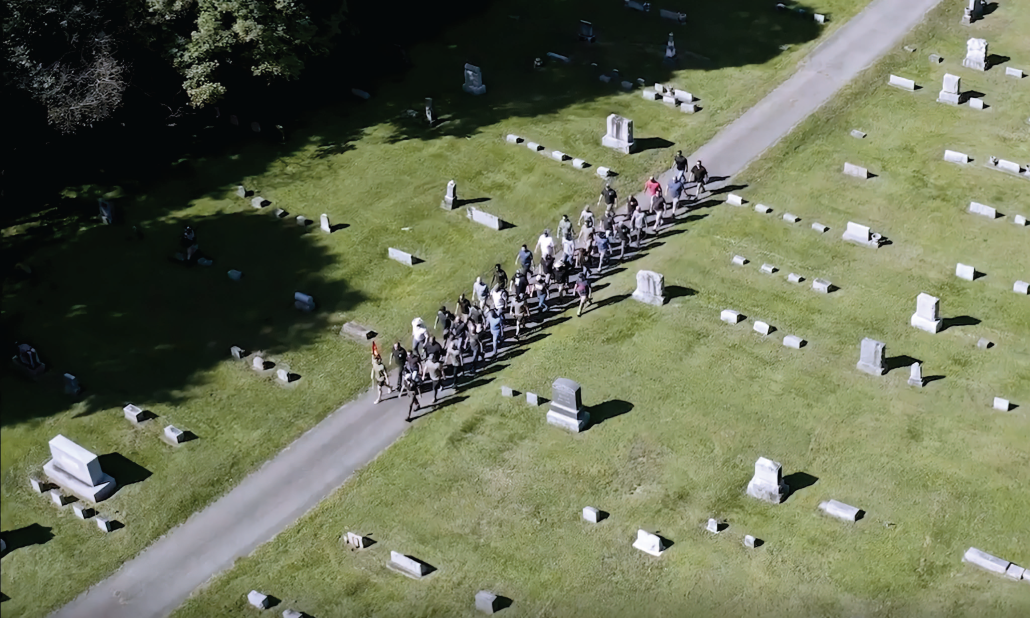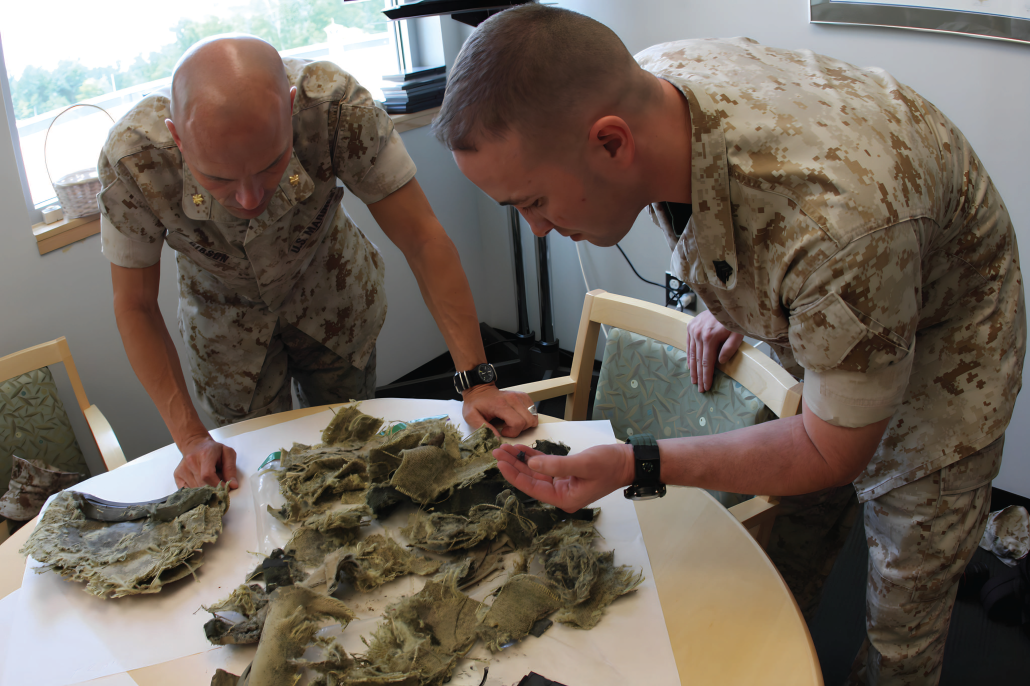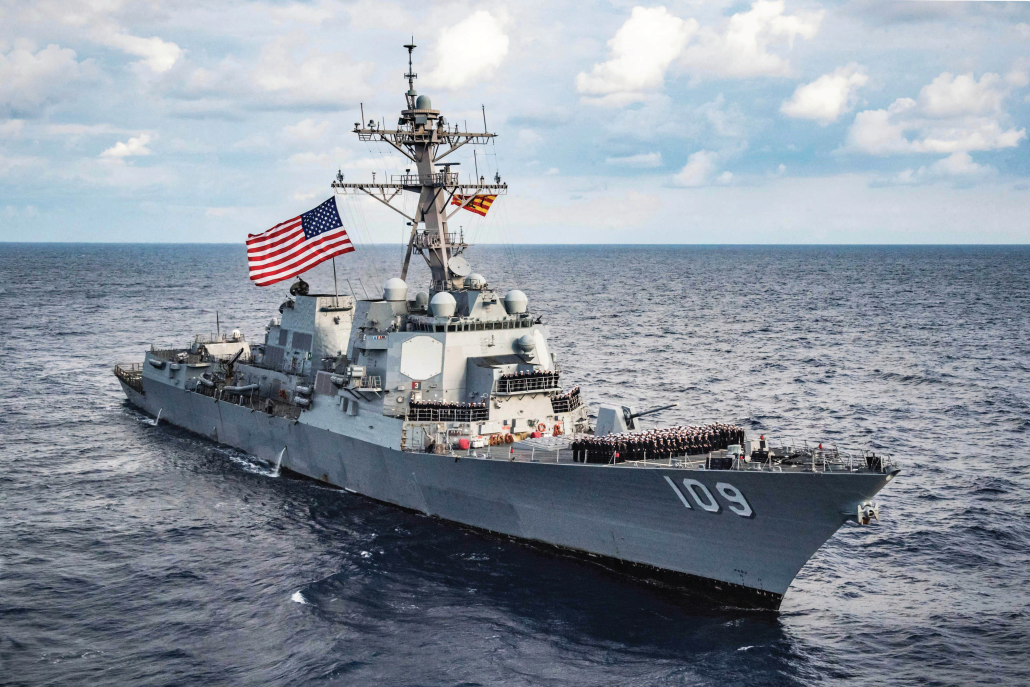Opinion: Long-Delayed Video Game
Delivers Realistic Depiction of Iraq Battle
War has forever been entwined with popular culture. Artists have attempted to replicate, with great attention to detail, iconic scenes of countless battles. Homer’s “Iliad” was spread throughout antiquity as poets recited the mythological history of the Trojan War. Many of today’s Marines were first exposed to the history of the Corps through literary accounts such as “Helmet for My Pillow: From Parris Island to the Pacific,” by Robert Leckie or Eugene Sledge’s “With the Old Breed: At Peleliu and Okinawa.” With the creation of film, and movies such as “Saving Private Ryan,” storytelling evolved, redefining how war was presented to the public. Perhaps it was inevitable, then, that video games—as a form of entertainment—would take up the mantle of trying to depict war within popular culture.
As long as storytellers, writers, artists, filmmakers, and game designers tried to replicate war, controversy closely followed. Painters have been accused of glorifying war. Poet Walt Whitman claimed, “The real war will never get in the books.” Director Steven Spielberg’s “Saving Private Ryan” was labeled by a writer from the New York Observer as a “pornography of violence and cruelty.” A World War II-themed videogame directed by Spielberg, titled “Medal of Honor,” became so mired in controversy that it was almost pulled from release before now being recognized as one of the greatest first-person shooters on the PlayStation platform. Ultimately, the question as to whether war should be depicted in popular culture is moot—as storytellers and creators will always adapt their depictions of war with evolving media. Rather, we should be asking how to best depict war in popular culture. Enter “Six Days in Fallujah.”
The Fight
On Nov. 7, 2004, the city of Fallujah, Iraq, ignited into a conflagration as Marines and soldiers of U.S.-led coalition forces launched Operation Phantom Fury to rid the city of militant Islamic extremists in what would be later called the Second Battle of Fallujah. The insurgents had turned the city into a fortress complete with tunnels, trenches, spider holes and improvised explosive devices of all varieties. Further complicating the coalition assault were the thousands of civilians who were unable to evacuate the city and remained hidden on every block. In the ensuing one month, two weeks, and two days, the Marines and members of the coalition fought in the bloodiest instance of urban combat in the 21st century—only to be surpassed almost two decades later with the ongoing war in Ukraine. The cost was terrible. Close to 100 Americans died and more than 500 were wounded. In addition, there were over 60 coalition casualties, the insurgents were largely annihilated, and at least 800 civilians were killed. Controversy closely followed the battle, as various media outlets reported on the use of white phosphorus and depleted uranium munitions, the extensive civilian casualties, the destruction wrought upon the city, and both real and supposed atrocities committed by both coalition and insurgent forces. Despite this, the Second Battle of Fallujah has become enshrined within the pantheon of Marine Corps battles—further demonstrating the combat prowess of the Corps against all enemies.
Among the wounded Marines was Sergeant Eddie Garcia, who was seriously injured by an insurgent-fired mortar. His fellow Marines managed to stop the bleeding and bring him to safety at a nearby field hospital before he was transferred to Baghdad, then Germany, and eventually to the United States. Upon returning home, Garcia reached out to Peter Tamte—a video game developer with Atomic Games.
The two had met before the battle. Garcia had been sent by the Marine Corps to be their subject matter expert for various training simulations that Atomic Games was developing. Throughout developing these Marine Corps training simulations, the two got to know each other quite well, with Garcia providing keen insight into how Marines fought and operated. However, when Garcia approached Tamte after his return home, it was not to develop another training simulation—he wanted to develop a video game based on the battle he had just fought.
The idea of a game quickly went from concept to reality. As the veterans of the Second Battle of Fallujah began returning to the United States when their deployments ended, Tamte and Atomic Games began conducting interviews with dozens of Marines who were willing to share their experiences. The interviews were expanded to include Iraqis who survived the battle. Recurring motifs from these interviews were the uncertainty and intimacy of close-quarters combat, the fear of what lurked behind the next door, the utter necessity of teamwork, the difficulty of fighting a radical enemy that could easily blend into a terrified civilian populace, and the combat fatigue induced by constant fighting and witnessing death regularly. It soon became apparent that the game needed to be grounded in realism and authenticity—both in gameplay and storytelling.
The game’s development was formally announced in 2009 and was planned for a 2010 release. However, problems began to arise. The controversy of the Battle of Fallujah and the public distaste for American intervention in the Middle East reared their heads. Some argued that the game’s subject was too recent to tastefully be depicted in a video game; others argued that the game would negatively depict Muslims by their worst stereotypes and devolve into a racist kill simulator; and some accused the developers of creating a propaganda piece that glorified a conflict that many viewed to be unjust. The controversy spawned by this criticism pushed the game’s publisher, Konami, to suspend its role in the project in April 2009. Within two years, Atomic Games went into bankruptcy—putting the future of “Six Days in Fallujah” into question.
Despite this series of obstacles, Tamte held onto hope. He eventually formed a new gaming company, Victura, to carry the mantle of producing “Six Days in Fallujah,” with developers from games such as “Halo” and “Destiny” jumping on board to help finish the project. Within two years, in late June, an early access version of the game became available for purchase via Steam. Since its release, “Six Days in Fallujah” has undergone a few updates, and the completed version will be available in 2024. Currently, the game is limited to online cooperative mode with teams of up to four people. However, a single-player campaign is in development. Based on the available content, we can begin to disseminate how “Six Days in Fallujah” authentically depicts war as a means of popular culture and to what degree it maintains authenticity.
Gameplay
Upon starting the game, the player is presented with a short film (with a History Channel-esque vibe) describing the situation with period footage, photography and interviews. Loading screens include images of veterans and Iraqi survivors accompanied by their quotes describing the battle. From this onset, the player realizes they are part of a real story with real people—not a generic war story where the characters are made up. In doing so, the game is trying to place players into the shoes of someone who took part in this battle—putting extra emotional weight behind the experience they are about to have.
After assembling a team in the co-op mode lobby, players are then thrust into a generated situation to accomplish a randomized mission, such as locating and destroying an enemy supply cache, securing an enemy strongpoint, or repelling waves of attacks supported by vehicle-borne IEDs (VBIED). To replicate the fear of not knowing what lurks behind every door, “Six Days in Fallujah” employs a map-design randomizer feature that creates new maps every playthrough: buildings will not appear in the same place, entrances will be along different walls, enemies will not hide behind the same doors, etc. This randomizer is perhaps the strongest feature of gameplay, as it forces the players to handle each situation uniquely, rather than memorizing a cookie-cutter scenario as in most other first-person shooters.
The learning curve for playing “Six Days in Fallujah” is steep and the gameplay is unforgiving—reminiscent of the famed game “Oregon Trail”: you can easily die at any time, for any reason, in any possible way. Snipers fire with deadly accuracy should you expose yourself for too long; mortars can wipe out an entire team with a single round; the enemy will fix your team with machinegun fire while a VBIED rolls up your flank and detonates behind you; insurgents will fire at you between cracks of war-torn buildings; your team can easily be caught in the fatal funnel of every doorway; the list is endless. This is not your typical run-and-gun game. The weapons feel weighted, and the recoil must be accounted for when pulling the trigger. Wounds must be bandaged; injured teammates must be assisted to get back into the fight; and ammunition can only be replenished at your AAV. Additionally, to quote Murphy’s law of combat operations: “Friendly fire isn’t,” which was a hard-learned lesson while clearing buildings. Many first-person shooter gamers may not be used to the slower pacing of the game; however, many gamers—some of whom served in combat—have applauded the game’s pacing as being more realistic.
You learn quickly that teamwork is the only way to accomplish missions—and even that does not guarantee success. If you try to move too fast, your team can get caught in an ambush; move too slow, the enemy can gain the initiative and outmaneuver your position; stay too close together, a single grenade can wipe your team; and spread too far out, you risk being defeated in detail. From my own experiences, of the 30 games played by myself and with two teammates, we were defeated within two minutes on 18 attempts, lasted longer than five minutes on 11, and accomplished the objective once. However, with proper coordination, patience and a basic understanding of the principles of fire-and-maneuver tactics, players can fight and win in the labyrinth of Fallujah.
Ultimately, “Six Days in Fallujah” is an experience akin to a horror-survival game that strives to ground its gameplay in a higher level of depth and realism. To an extent, the game is a teaching tool as much as it is a means of entertainment. Yes, not every feature is perfect as some reviewers have pointed out, but with the game still being in development, time allows for the edges to be smoothed out for greater historical accuracy. However, in an era where Nicki Minaj is a playable character in “Call of Duty” and where “Battlefield V” bastardized World War II with historically inaccurate character customizations, “Six Days of Fallujah” is a breath of fresh air for those who want a historical experience when gaming. And to those who question as to whether this game is coming out “too soon,” I respond with this:
After over 20 years of fighting two wars, many Americans cannot name a single battle or recall any cities in Iraq or Afghanistan besides maybe Baghdad. To them, places such as Fallujah, Marjah, Mosul, Basra, or Kandahar mean nothing. They cannot recall any place where their tax dollars sent our country’s finest to fight and die in wars that were fought for reasons that are increasingly unclear to the general public. What “Six Days in Fallujah” has done is keep the Iraq War in the public consciousness, to remind us that these wars involved real people who had to live with the consequences of being in monumental historical situations. It portrays war as a human experience and attempts to do so as accurately as possible. If “Six Days in Fallujah” can encourage a young gamer to reflect upon the struggles of the Iraq War, watch an educational film on the subject, or read histories or biographies from survivors, then the game has served its purpose.
For now, gamers must be content with the available cooperative mode. Only with the release of a single-player campaign can we truly understand the full extent to which “Six Days in Fallujah” can be used to tell the story of one of the Marine Corps’ most hard-fought battles in Iraq.
Author’s note: I would like to thank Danny Roldan and Ricc Donate-Perez for playtesting “Six Days in Fallujah” with me to help write this article.
Author’s bio: William Treuting is an editor and content creator for the Marine Corps Gazette. He is a cohost of the MCA’s “Scuttlebutt” podcast and director of MCA Films.


